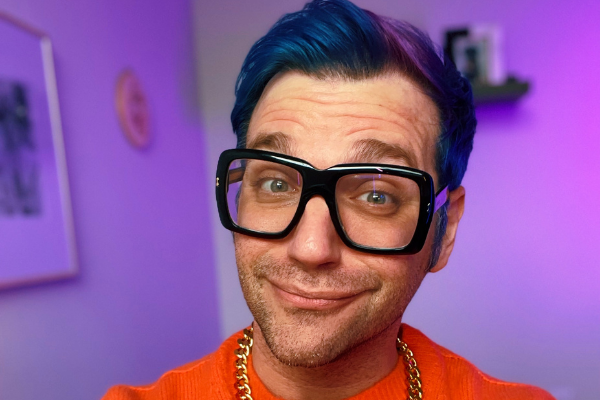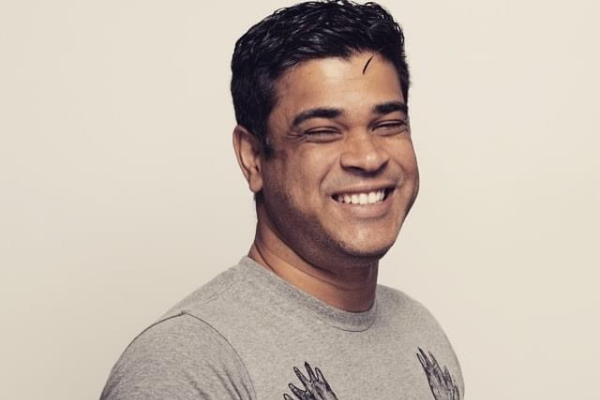How to Be an Ally and an Accomplice to LGBTQIA+ Folks

As we celebrate Pride and the LGBTQIA community this month (and 365 days a year!), let us be reminded that Pride started as a riot. It wasn’t about fanciful floats, beautiful costumes, branded installations, or a month of celebrations. And though many of us now have the privilege to revel in the beauty of parades and parties in an inclusive environment, Pride celebrations continue to be rooted in our shared goal of justice & radical queer liberation.
Justice, equality, and liberation mean having the right to love, exist, move, work, thrive, travel, self-express, heal and grow — free from impediments, discrimination, micro-aggressions, and systemic barriers. This fight for justice is ongoing, and if you’re cis and/or a straight person who wants inclusive environments for all, you have an important role to play in the movement — as an ally and also as an accomplice.
If you’re new to the language of allies and accomplices, Adam Maurer (him/her), a straight-friendly Austin-based therapist explains the difference:
“Allies are more like cheerleaders, rooting for you from the sidelines. Accomplices are down on the field playing the game with you and other members of the LGBTQIA community, using their skills to help further the cause.
Accomplices are helping to dismantle the systems that oppress queer people, while allies simply “boo” them. We appreciate the thought, but need the effort.”
As a good ally, you may offer support to a co-worker who is facing gender-based discrimination in the workplace. As an accomplice, you’ll advocate for specific change on their behalf — even when your advocacy might adversely affect your privilege (e.g., you may burn bridges with co-workers or supervisors). Both roles are important and help lead to greater equality.
As an ally, you support all-gender washrooms at your child’s school. As an accomplice, you bring up the topic at the parent’s association meeting. You do your research on how to ensure washrooms are safe for trans and non-binary staff and students and you work to ensure the implementation of appropriate processes and facilities. Too often, the onus of advocacy falls onto the laps of queer folks; as an accomplice, you lighten the load without centering yourself.
As an ally, you ensure that you use the right pronouns for your neighbor’s child who goes by they/them. As an accomplice, you speak up when another neighbor misgenders them — even in the face of their judgment or your own discomfort. You do additional reading to understand the importance of pronouns so that you can explain their meaning to other folks in your circle. You know that you don’t have to have all the answers, but you read beyond the headlines so that you can affect positive change locally.
There is, of course, overlap between being a good ally and a good accomplice, and there are many ways to offer support.

Daven Seebarran (he/him), a leadership consultant who offers training in intersectional diversity, equity, and inclusion explains that support means actively listening and working to understand how systemic barriers affect his lived reality:
“As a gay man with many intersections, I would like my allies to ask questions about my experiences, and if asked, use their platform to champion for those intersections of my identity. I want them to go beyond the performative allyship and actually do the hard work. I want them to be authentic in their championship by assuming risk, and being consistent across situations and places.
I also want people to open their eyes to LGBTQ+ and racial discrimination happening all around them and to call people in or call them out for their statements. I also want my allies to lead with empathy. An empathetic approach shows an understanding of my experience.”

Jamie Pandit (she/her), a blogger, fashion expert & influencer who shares her experience as a trans woman on IG & TikTok agrees and adds that there is no one-size-fits-all approach to showing support:
“For me, personally, it’s taking the time to educate oneself as there’s so much more material available online than ever before. But, also making me feel safe and included in conversations or when I am in different spaces with them by acknowledging my identity and the different experiences that come because of it. It’s taking the time to ask ME questions and having an interest to want to learn instead of thinking they know it all just because they are “accepting” of me.
It’s sometimes standing up for me AND standing with me when they witness others speaking poorly of queer people whether directly at me or indirectly.
Telling someone you “love them and accept them” isn’t enough, it needs to be seen and felt through action.”
Being an LGBTQIA ally and/or an accomplice can feel thankless. And that’s okay. Because it’s not about you.
“One of the biggest mistakes an ally can make is to center themselves in the narratives of the struggles of queer people,” explains Maurer. “Being an ally is tough, and it is never as tough as being marginalized. Another challenge for allies is to own that you cannot fully get it, because you don’t live it. You get it as best as you can.”
Seebarran adds that being labeled an LGBTQIA ally is not a badge you get to choose for yourself:
“Allyship is bestowed on an individual only after they have demonstrated that they have moved beyond performative allyship. Most people perform the role of all. Many feel like they have the right to speak on my behalf. I also find that many allies, especially make the assumption that the LGBTQ+ community is homogenous and that the experiences of all LGBTQ+ people are the same. This simply isn’t the case.
Allyship is about the person needing support and not the person providing support.”

If you want to take action to be a better ally and/or accomplice to LGBTQIA individuals, consider the following action items curated by Seebarran, Maurer & Yours Truly:
- Talk to people who would never listen to me. As a straight/cis person, you get a seat at the table, so use it to amplify our messages and advocate for our needs. If you’re wondering what we’d say if we had a seat at the table, feel free to ask.
- Donate to causes that benefit LGBTQIA+ folks. The income gap related to gender identity and sexual orientation begins in youth with LGBTQIA+ teens disproportionately dealing with homelessness. Check the #transcrowdfund hashtag for links to current fundraisers.
- Do research on your own so that the burden doesn’t always fall on us. Read about the importance of pronouns, and the history of pride, and update your library with some of these resources (including books for parents and kids).
- Listen to us and believe us. Our experiences are unique and personal. When we experience discrimination, listen and learn. Sometimes an open ear is a powerful action in and of itself.
- De-center yourself. Amplify our work. We’re glad you’re doing it, but LGBTQIA+ folks have long been putting in the time and effort, so make sure you’re giving credit where credit is due. Speak up for us but follow our lead so that you’re not taking away from our own self-advocacy.
- Work on your own biases and acknowledge your own privilege. This is an ongoing process for all of us — within the LGBTQIA+ community and among our allies and accomplices. It requires self-reflection and a willingness to acknowledge that we’re imperfect and have caused harm.
- Recognize that our experiences of gender identity and sexual orientation intersect with other layers of our identity including race, class, body, age, immigration status, and dis/ability. We are not a monolith, and we face discrimination and systemic oppression within our communities as well.
- Be open to being corrected as you may not have all the answers or may not know the right thing to say. Be open to learning so that you can grow as an individual and can better support us in the future
- Take action against anti-trans laws. The volume of anti-trans legislation is too great to list, but you can see a live tracker by the Trans Formation Project here. To find out how to take action in your state (e.g. sign letters of support, donate to local organizations, send messages to lawmakers), check out this resource at the-ard.com
Be more than a cheerleader for LGBTQIA individuals. Take action today!
As Maurer reminds us, “as a gay person, I don’t need people yelling, you go girl! at me — that’s what drag queens are for; I need allies to listen to what feels like support to me in the moment, and to take action from there.”
